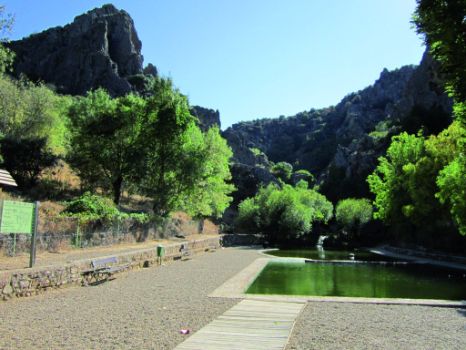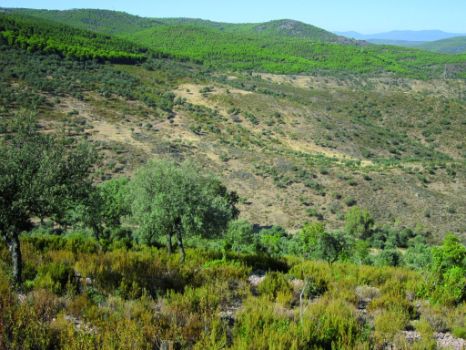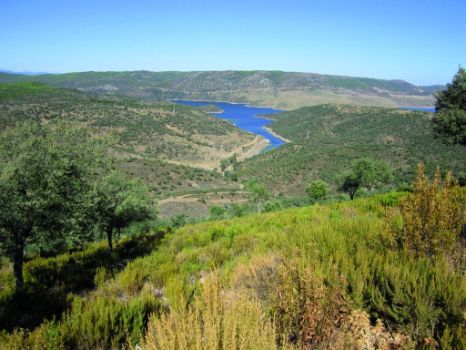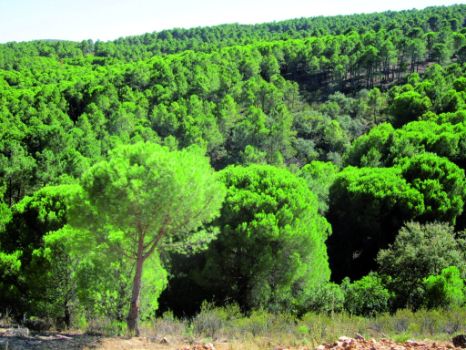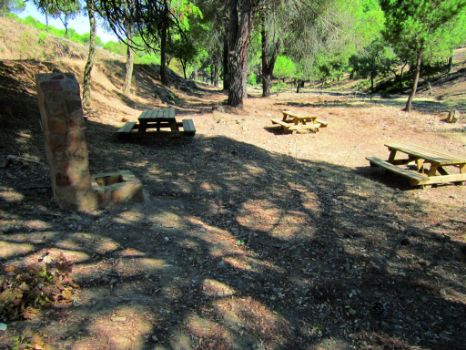Net of Natural
Trails

Stage 17: Villarta de los Montes - Helechosa de los Montes
Description
Through La Rinconada Mountain Range
This Stage traverses through La Rinconada Mountain Range on the southwest flank of Cíjara Reservoir. It starts and ends at two town different towns located close to the reservoir's shore. The landscape changes as one proceeds from one town to another, as the route ventures through scrub-oak forests, livestock pastures with rockrose thickets and, finally, pinewoods. In the final stretch, as the route climbs down to Helechosa de los Montes, the landscape sequence is inverted.

The Stage heads west from Helechosa de los Montes along a paved path that crosses the Cañada Real, then continues towards El Castañar Natural Pool, a site of extraordinary natural beauty at the foot of an impressive rock massif, with a recreational area and a few stone pools fed by the Castaño Creek. The recreational area has public infrastructures, changing rooms and interpretation panels. There is a second natural pool across the road, but it is private.
Past the creek and the natural pool, the Trail climbs up a slope along a paved path. There is a beautiful view from the summit, with the town in the background, the rock massif with the pools in the middle ground, and the winding slope between holm oaks (Quercus ilex) and scrub in the foreground. Past the summit, the path becomes a dirt track that ventures through livestock farms where pastures alternate with scrubland, primarily rockrose(Cistus sp.), along the edges.

As the track climbs towards La Rinconada Mountain Range, the livestock landscape gradually changes into forests. The pastures give way to meadows interspersed with scrubland. Further on, one can see treeless areas that have been reforested with kermes oak (Quercus coccifera) Reforestation with kermes oak is a common practice in this area, and in other parts of the Extremaduran Siberia and nearby mountains.
Dense masses of stone pines (Pinus pinea) cover the upper reaches of the slopes above the Trail. However, they gradually appear also on the roadside, especially from Puerto Lobo onwards, where the forest refuge stands. The Trail reaches a crossroads with a path leading to Robledillos Interpretation Centre.
Maritime pine (Pinus pinaster) stands alternate with stone pines. The path runs most of the time in the shade, under the canopy of a wood. There is a rest area with benches and tables at the crossing of Macegoso Brook, next to the bridge. The recreational area may be accessed from the Trail using a flight of wooden steps embedded in the cliff. Trees have been planted to provide shade, although nearby pinewoods protect the traveller from the sun.
Further on is another crossing over Rincón Creek. The surrounding cliffs are populated with holm oaks. One can get a last glimpse of Cíjara Reservoir from Morro del Alicante and Peña de la Visera.

At Collado de la Maribarba, the Trail reaches a crossroads with the path to Valdemoros. There is a forest refuge here, albeit not in very good condition. The Stage arrives at a relatively large clearing reforested with kermes oaks. Sections 17 and 18 meet at this point and continue along a common path until Helechosa de los Montes.
Past the pinewood, the path reaches a farmland, although the predominant natural vegetation is scrub. It continues down a steep slope and arrives at Helechosa de los Montes, the endpoint of this Stage.
Sites of interest
Profile
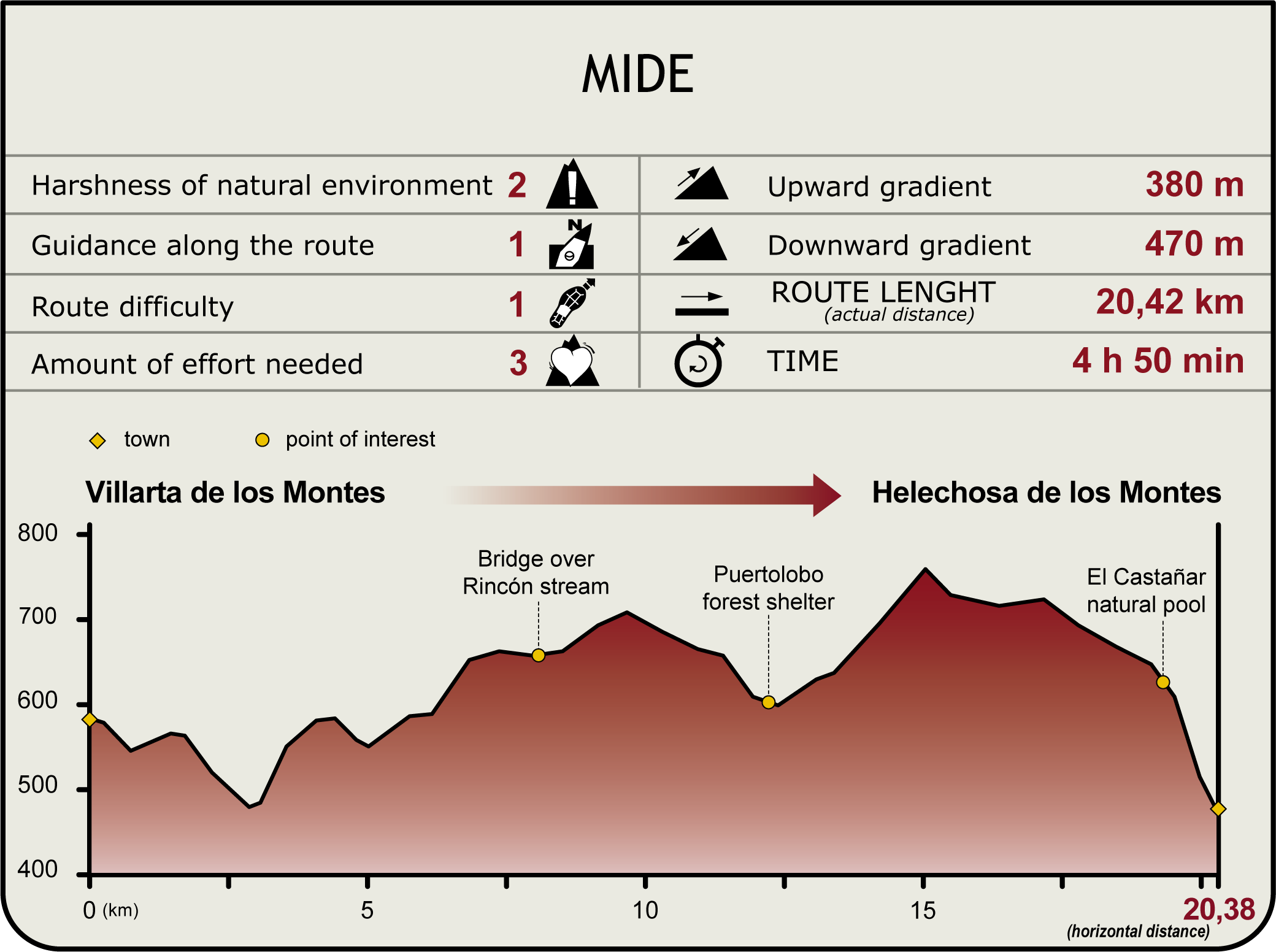
Highlights
Further information
Los Robledillos Interpretation Centre
Los Robledillos Interpretation Centre, the visitors’ centre of Cíjara Regional Game Reserve, is installed in a renovated building located at its namesake site. It also houses the "Rut Observatory", a major tourist attraction during September and October when the rut takes place.
The interpretation centre provides information on the values of the environmental setting. It also showcases various resources, including ecotourism, hunting and fishing, forestry, and natural resources. The different phases of the rut are explained in the "Deer Hall".
The contents of this centre have been agreed with the Extremaduran Network of Museums.



